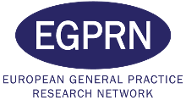Delphi Study on Primary Health Care Indicators for COVID-19 Pandemic across 30 European Countries: Eurodata study, preliminary results
Raquel Gomez Bravo, Sara Ares Blanco, Ileana Gefaell Larrondo, Lourdes Ramos Del Rio, Ferdinando Petrazzuoli, Alice Serafini, Davorina Petek, Snezana Knezevic, Radost Assenova, Thomas Frese, Heidrun Lingner, Limon Adler, Shlomo Vinker, Ana Luisa Neves, Bruno Heleno, Elena Brutskaya-Stempkovskaya, Bert Vaes, Bohumil Seifert, Maria Pencheri, Sabine Bayen, Theresa Sentker, Peter Torzsa, Louise Fitzgerald, Martin Sattler, Maryher Delphin Peña, Katarzyna Nessler, Carmen Busneag, Anna Kvitting, Erva Kırkoç, Büsra Çimen Korkmaz, Оксана Ільков, Nagu Penakacherla, Dragan Gjorgjievski, Aleksandar Kirkovski, Maria Bakola, Philip Domeyer, Sherihane Bensemmane, Ábel Perjés, Kathryn Hoffmann, Miroslav Hanževački, Milena Kostić, Goranka Petricek, Marijana Jandrić-Kočić, Achim Mortsiefer, Jako Burgers, Alejandro Gimenez Buitrago, Pedro Jose Saurin Moran, Marina Guisado Clavero, Maria Pilar Astier Peña, Eurodata Collaborative Group
Keywords: COVID-19, indicators, primary health care, public health
Background:
During the COVID-19 pandemic, the significance of primary health care (PHC) has been assessed using over 40 distinct indicators across Europe. However, a consensus has yet to be reached on the most effective COVID-19 indicators to establish a comprehensive PHC scorecard for European health authorities. This study aims to create a scorecard to enhance policy decision-making in future health crisis scenarios throughout Europe.
Research questions:
Which PHC indicators are most relevant for assessing the impact of the pandemic in primary care settings?
Method:
168 specialists in primary care and public health were invited to answer the following question in an online Delphi study. The survey had 86 items, structured in 11 sections to assess a total of 22 PHC indicators. A Likert scale was used to evaluate the results. 117 experts participated in the first round and 102 in the second round and achieved a high degree of consensus (results). Data collection took place between December 2022 and April 2023. The consensus was defined as 70% of respondents agreeing or strongly agreeing.
Results:
117 experts participated in the first round and 102 in the second round and achieved a high degree of consensus. In the first round: Four indicators with disaggregation and periodicity information were accepted. Seven indicators were rejected and 11 went to a second round. In the second round, 5 indicators were accepted and 6 clearly rejected with very low punctuation. The panel finally agreed to select 9 PHC indicators with a disaggregation at the regional and national level mainly and a weekly periodicity which may change to daily in pandemic periods. Variability was found in the portfolio of services across countries
Conclusions:
This study contributes to identifying a minimum set of indicators to consider primary care activity for decision-making in relation to epidemic and pandemic situations of COVID19 and other respiratory infections.
Points for discussion:
What is your opinion about the need of having shared indicators in Europe?
Would other healthcare workers have to be included in this study?
How frequently would you collect the indicators?
#106

